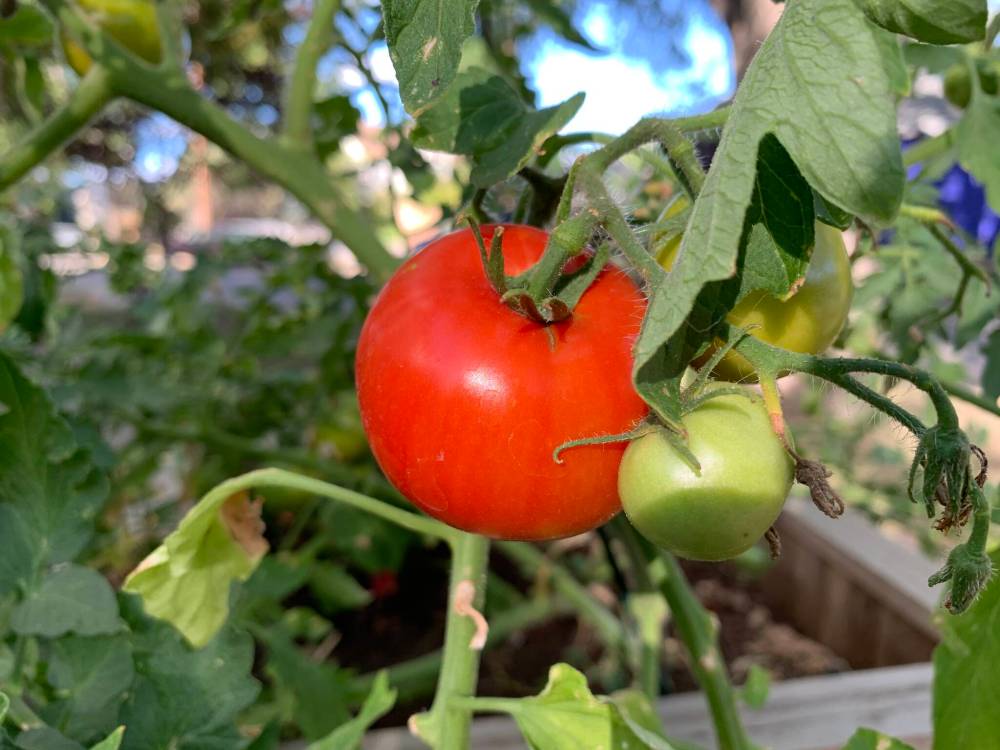
Yesterday, my kid packed his lunch. He included homemade apple chips.
We made those apple chips in the dehydrator, slicing up apples from a neighbour’s tree and saving the harvest. We plugged the dehydrator in outside, to reduce heat production indoors. Eight hours of drying time later, we have healthy food snacks for lunches.
Many homes do this kind of thing. It was all free aside from the electricity and the long-ago initial cost of the dehydrator.
Russell Wangersky / Free Press If you have too much homegrown produce, you should be able to have it find its way to those in need.
According to recent coverage in the Free Press, Harvest Manitoba has commissioned a feasibility study looking into creating a larger-scale ‘food transformation centre.’
Their aim is to “turn produce destined for landfills into meals for people in need.” This is a fancy way to say that Harvest Manitoba needs to buy equipment so it can put up fresh food donations.
In old-fashioned terms, Harvest Manitoba would like to put up food for winter by perhaps exploring ways to can, preserve, or dehydrate more fresh food.
Old-timers know, without doing a study, that putting by food for later at home saves lots of money. It provides nutritious food for the table during the winter, when acquiring fresh food is more expensive and difficult. This isn’t such a radical new concept. Yet, to initiate this in our modern age of documentation, Harvest Manitoba needs a study to figure out costs and benefits to this proposal.
North Americans waste a lot of food, and it’s a problem. So much fresh food ends up as waste in the landfill rather than getting eaten promptly. This rotting food doesn’t even break down to enrich our soil, because Manitobans don’t have widespread composting, either.
Yes, Winnipeg has plans to start charging residents for a future composting program. Yet the city won’t actually be composting all our household trash for years to come. For now, most of us contribute to food waste even when we put out the trash.
Many gardeners who are serious about producing food and avoiding waste embraced the “Grow-a-Row” program introduced by Harvest Manitoba. I know about this because when my family picks too many apples, we drive them to the food bank and put them in a donation bin.
We weren’t the only ones. The bins were full of fresh food — squash, onions, apples, pears and more. The entry log had row after row of garden produce entries, full of named and anonymous Winnipeggers who had excess and wanted to give back.
The first time I witnessed this, I was so moved by what I saw that I cried. Here were locals who transformed extra food into a huge gift, rather than letting it go to waste. Their efforts showed love and care for others. It motivated me to work with my kids to do this again. We saw that low-hanging fruit, the extra produce, everywhere in Winnipeg. We can all do more.
Many Manitobans are hungry, too. Rising food costs mean that many people: adults, seniors, and children, need food bank support. This isn’t limited to only one component of our community, either.
Manitoba’s population is diverse, and so are food bank users.
Obviously a ‘food transformation centre’ needs larger, more complex equipment than my household’s canning pot, dehydrator, and freezers. Perhaps Harvest Manitoba’s feasibility study results will be public.
It would truly be something to see if our community’s business leaders stepped up to donate funds or equipment to support this “newfangled” approach to reducing waste and feeding those who need it. A walk-in freezer can hold a lot of frozen veggies with a sponsor’s name on it. A farmer, grocer or restaurant’s waste diversion program could have promotional ‘naming rights.’
Many volunteers could work together to preserve food as well. Unlike a ropes course or a trust circle, imagine a food bank corporate or professional team building activity where everyone knew their efforts had value. While building professional collaboration, their teamwork would feed the hungry. This would be professional development with real meaning.
If you’ve ever purchased or picked naturally imperfect produce, you know that a lot of food is going to waste even before it’s sold because it’s not picture perfect.
CEO Vince Barletta’s food rescue plans may be billed as a ‘new frontier’ to reduce waste, but it uses a very old model. Preserving food, taking care of the needy among us, and working as a team to make it happen aren’t new inventions.
Here’s hoping Manitobans can embrace this worthwhile effort to take care of one another. Let’s move quickly from the feasibility study stage to transforming our food waste to feed hungry Manitobans. We can do this together.
Joanne Seiff is a Winnipeg author and freelance writer.


